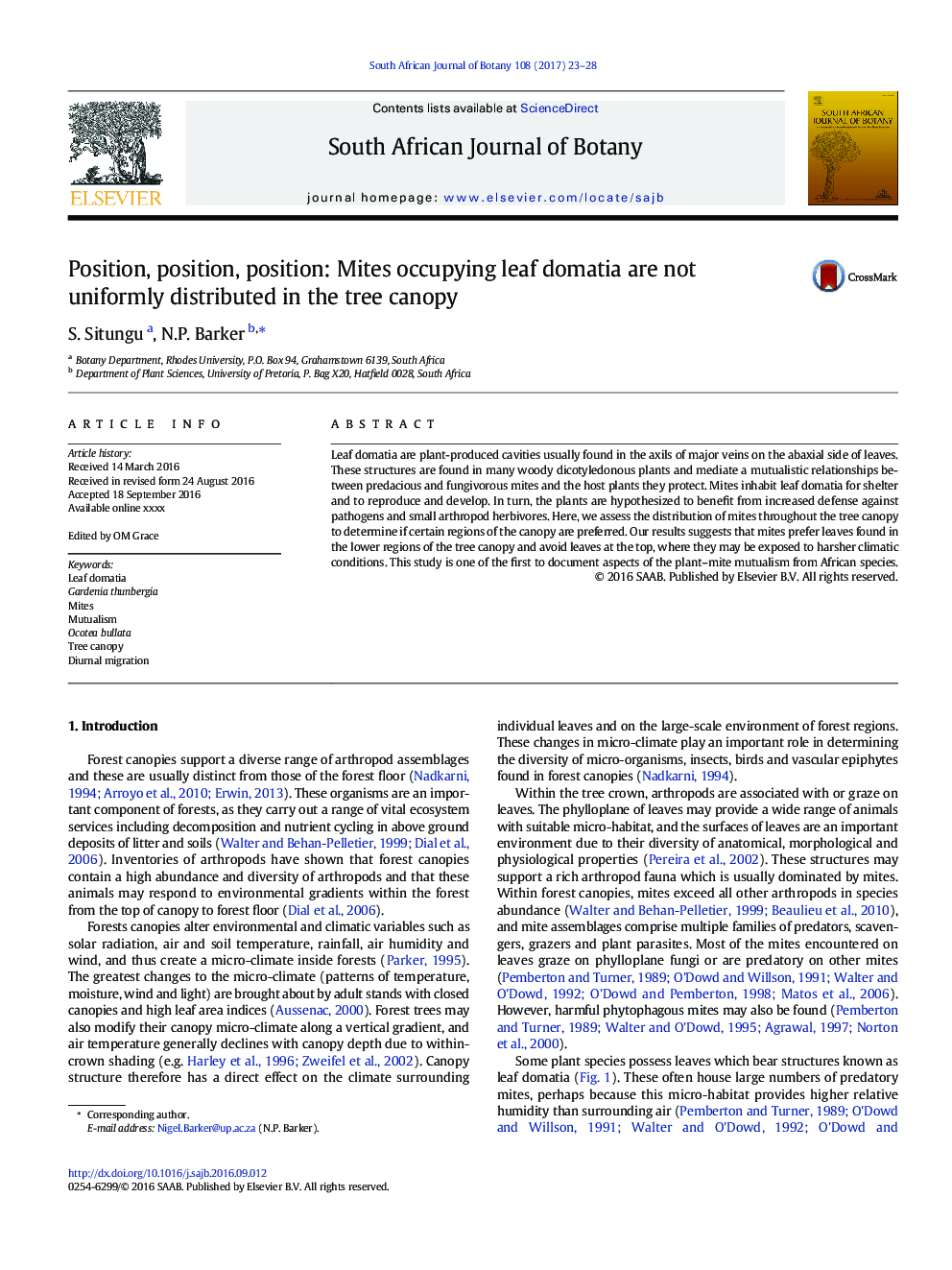| Article ID | Journal | Published Year | Pages | File Type |
|---|---|---|---|---|
| 4520066 | South African Journal of Botany | 2017 | 6 Pages |
•Some woody species of plant possess modified leaf structures termed domatia.•Mites are known to occur in these.•A mutualistic relationship between plants and mites has been hypothesized.•The distribution and species composition of mites within the tree canopy is demonstrated.•Micro-climate data suggests that mites prefer cooler and more humid canopy sites.
Leaf domatia are plant-produced cavities usually found in the axils of major veins on the abaxial side of leaves. These structures are found in many woody dicotyledonous plants and mediate a mutualistic relationships between predacious and fungivorous mites and the host plants they protect. Mites inhabit leaf domatia for shelter and to reproduce and develop. In turn, the plants are hypothesized to benefit from increased defense against pathogens and small arthropod herbivores. Here, we assess the distribution of mites throughout the tree canopy to determine if certain regions of the canopy are preferred. Our results suggests that mites prefer leaves found in the lower regions of the tree canopy and avoid leaves at the top, where they may be exposed to harsher climatic conditions. This study is one of the first to document aspects of the plant–mite mutualism from African species.
